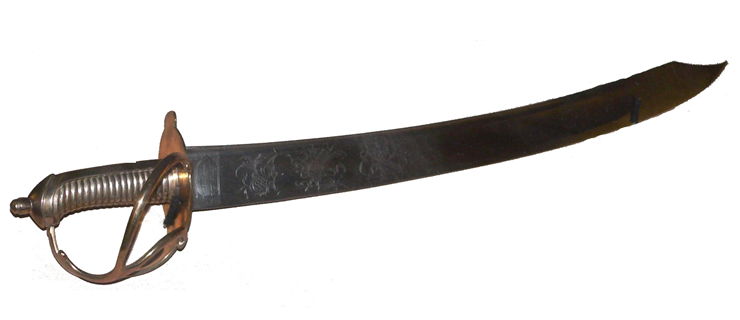Cutlass - Common Pirate and Naval Weapon
Sailors during the age of sail were usually outfitted with very few pieces of combat equipment, but one of the most popular bladed weapons that were used between 17th and 19th century was without a doubt a Cutlass. This short sword with well-defined separation between the handle and two-edged blade (most commonly formed as a basket-shaped guard) became widely used in both Navy and pirate ships because of its high versatility. The sword was highly usable for general ship work and repairs (for example hacking of heavy-duty sail ropes, chopping of woods, cutting of strong canvas…) but was also highly defective in close combat. It was small, lightweight and most importantly usable in close quarter environments such as insides of ships. It even enabled the wearer to jump from deck or rope rigging of one ship to another during boarding action, which would be much harder with larger or heavier sword.
The origin of the Cutlass come from the medieval times and the several types of small swords that were popular back then. It most resembles famous Falchion – sword that was so versatile that many used it as a woodcutting tool after its adoption in the 13th century. The naval version of this blade became one of the most popular swords during the age of sail, with both officers, crewmen, and pirates using them regularly. To effective use cutlass, sailors needed to pass only simple training that lasted much less than was needed for rapier and other types of small swords.
Since the pirate lore became so prevalent and rich in detail in the 18th and 19th century, the authors of history books (with sometimes exaggerated accounts of events), pirate novels and stage plays placed almost mythical abilities on pirates and their captains who almost exclusively all masterfully used cutlasses in their raids, fights with authorities and treasure hunts. Some authors went even to such lengths to describe events in which crews of merchant ships surrendered on the very sight of pirates placing their hands on the grips of their swords. Other eye-witness reports told the tale of pirates using cutlasses as torture devices – not for cutting flesh but for hitting prisoners using the flat portion of the blade to force compliance. The oldest written report of any pirate using cutlass comes from the pen of French historian Alexandre Exquemelin (1645-1707) who reported that buccaneer Francois “Flail of the Spanish” l'Ollonais used it as early as 1667. The pirate captains (and their crews) that were reported to use cutlasses the most were Stede Bonnet (captain of the famous sloop “The Revenge”), William Kidd (English privateer who was executed after very public trial) and William Fly (one of the last major pirates who was executed at the very end of the Golden Age of Piracy in the Atlantic).
After the end of Pirate domination in the West Indies and Indian Sea, the cutlass remained in use on military ships for more than two centuries but general population on adapted its form into popular “machete” blade that continues to be one of the most popular bladed tools and weapons in Caribbean and Central America. In those territories, the word “cutlass” still today holds a meaning of any blade that is used by laborers during their daily tasks. Cutlass left the regular use in British Royal Navy in 1936, remaining only as part of the officer's attire during ceremonies. The United States pulled cutlass from regular use on the sea in the 1930s, although the official order came only in 1949. Since 2011, Chief Petty Officers can carry cutlasses as the part of their ceremonial wear.
